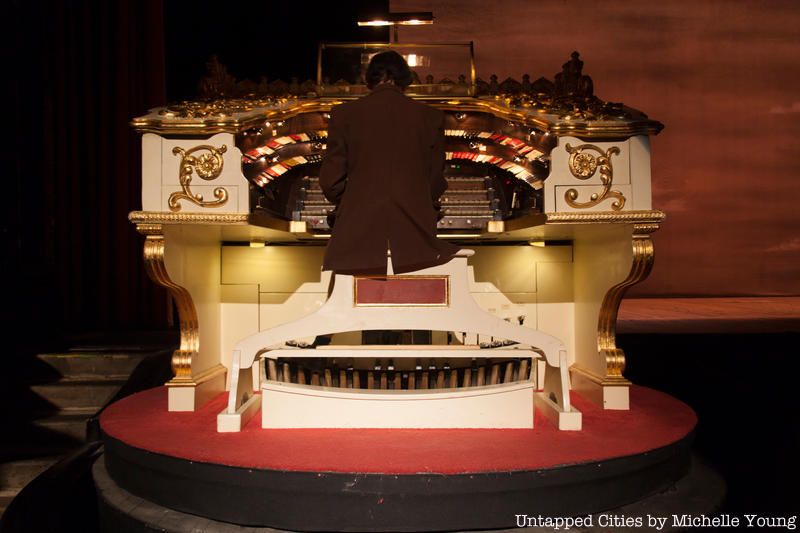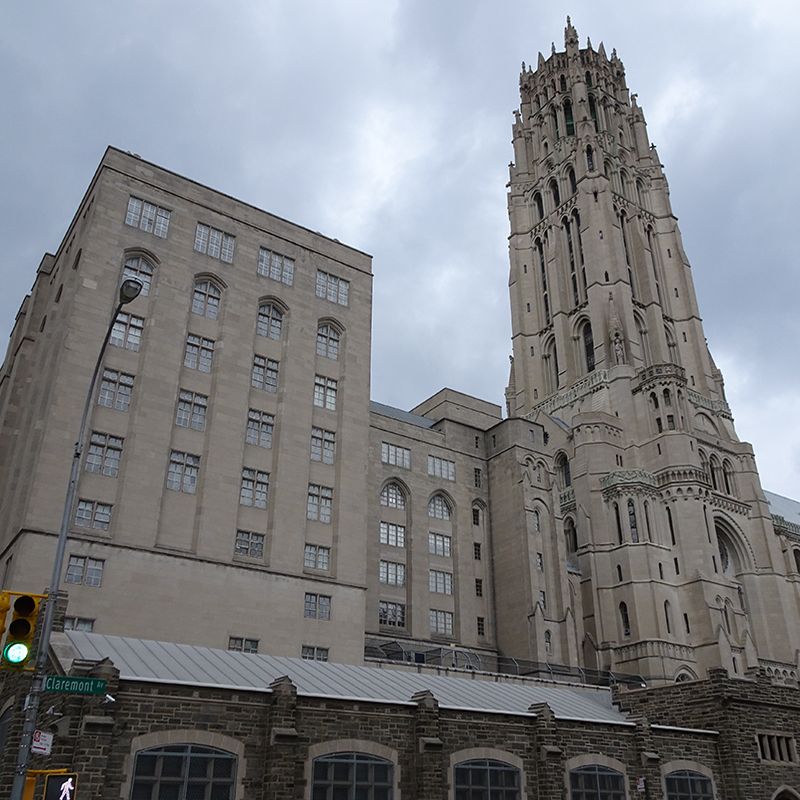NYC’s Forgotten ‘War on Christmas Trees’
Discover how an obscure holiday crackdown affects festive street vendors today!



Musical instruments are not always the first thing that comes to mind when you think of architecture, but they are often embedded into landmark buildings. This month, several other unique instruments are featured on display within museum exhibits. Here, we have curated a list of musical instruments you may have overlooked in your daily walk, or should check out on your next exploration.

Cole Porter’s mahogany baby grand piano, now sitting in the Peacock Alley Lounge
The largest suite in The Towers of the Waldorf Astoria Hotel belonged to Cole Porter, who lived there from 1934 until his death in 1964. The 4,300 square foot Suite #33A consists of 5 bedrooms and 5 1/2 baths. Porter had two baby grand pianos inside along with his two cats named “Anything” and “Goes.”
The piano he bequeathed to the Waldorf was built in 1907 and was purchased by Porter from the Steinway family. It was here in Suite #33A and on this piano that he wrote most of his music. After Porter’s death in 1964, Frank Sinatra and his wife Barbara took over the lease and lived there until 1988. The piano was bequeathed to the Waldorf Astoria and is currently in the Peacock Alley Lounge, just off the main lobby.

In many church belfries you’ll find carillons, musical instruments compromised of bronze bells often played by a keyboard. The carillon at Riverside Church was donated by John D. Rockefeller, Jr. in 1925 in honor of his mother, with a sister carillon to the Rockefeller Chapel in Chicago. The Riverside Church carillon has 74 bells and when created was the largest carillon in the world, by number of bells. The Riverside Church carillon remains the largest in the world by mass, and includes a 20-ton bourdon bell that hits a low C, the largest and heaviest bourdon ever cast in the world. It measures 10 feet, 2 inches across.
Today, two carillons surpass Riverside Church by number of bells – Kick in the Hills in Michigan and Hyechon College in Korea both carillons with 77 bells. The second largest carillon in New York City after Riverside Church is one at St. Martin’s Episcopal Church in Harlem.

Model B grand piano, case by George A. Schastey & Co. (1873–97), piano by Steinway & Sons (founded 1853). New York City, 1882. Approx. H 72 x W 60 x D 84 in., open. Satinwood, purpleheart, brass, and silver mounts. Collection of Paul Manganaro, on display at the Metropolitan Museum of Art.
On display as part of the Metropolitan Museum of Art exhibit, “Artistic Furniture of the Gilded Age” is a Steinway grand piano by George A. Schastey, a celebrated cabinetmaker and decorator of the era whose works appear in some of the most renown mansions of the day. His only signed work is an opulently decorated 1882 art case Steinway piano, the subject of the upcoming piano series starting tomorrow, Schastey’s Steinway: Music of the Gilded Age.
The Aeolian-Skinner pipe organ at St. Bartholomew Church on Park Avenue and 51st Street in New York City is the largest organ in New York City, by number of pipes, and has been played by acclaimed pianists like Leopold Stokowski. The double organ made its debut in 1901 as a single organ designed by the Ernest M. Skinner Company of Boston. The organ was expanded starting in 1927 and improvements to the instrument continue into today. Today, it has 168 stops and over 12,000 pipes with organ blowers now located in a climate controlled room in the basement. Parts of the organ are placed throughout the church, including a section in the dome. The organ can produce sounds including, “ethereal celestes, colorful flutes, orchestral reeds, and brilliant trumpet,” describes the St. Bart’s website., where you can also read a long history of the pipe organ.

The Loews Wonder Theatres were truly sights to behold, cathedrals built for the moving picture industry. While four of the Wonder Theatres were located in New York City proper, one was in Jersey City. Although The Wonder Morton pipe organ in the Jersey Wonder Theatre is not the original, a sister organ, created by Robert Hope-Jones for the Loews Paradise Theatre in the Bronx, was installed by the Garden State Theatre Organ Society. Organs replaced the expensive live orchestra entertainment that had been standard. This type of pipe organ is also called a “unit orchestra” because it can produce the sounds of orchestral and percussion instruments.

Though not a musical instrument that could be played, two of Picasso’s abstract guitar sculptures were gifted by the artist to The Museum of Modern Art. Sculpture formed a key part of Picasso’s artistic development throughout his career, used as both study for his paintings and as treasured objects in his own possession. As the latest exhibit “Picasso Sculptures,” on display until this Sunday, February 7th describes: “Treating them almost as members of his household, he cherished the sculptures’ company and enjoyed re-creating them in a variety of materials and situations. Picasso kept the majority in his private possession during his lifetime. It was only in 1966, through the large Paris retrospective Hommage à Picasso, that the public became fully aware of this side of his work.” The guitars were also part of a 2011 exhibit “Picasso: Guitars 1912 – 1914” dedicated to the object at The MoMA.

At the American Academy of Arts and Letters at Audubon Terrace in Washington Heights, you can view the Connecticut studio of a famous American composer recreated piece by piece. Charles Edward Ives was one of the first American composers to achieve international renown. He spent his life in Connecticut and New York composing songs that embodied his environment, including Variations on America and Central Park in the Dark.
When Ives died in 1954, his widow bequeathed the royalties from his music to the American Academy of Arts and Letters for the Charles Ives Prize, a scholarship for young composers. When Ives grandson, Charles Ives Tyler, decided to sell the family’s Connecticut home, he reached out to a number of organizations who might be interested in preserving his grandfather’s legacy.
Know of more? Let us know in the comments or via Twitter @untappedcities. Next, discover Retrofret, a Brooklyn music shop devoted to rare and bizarre instruments.
Subscribe to our newsletter